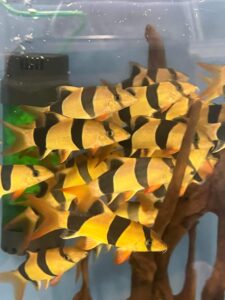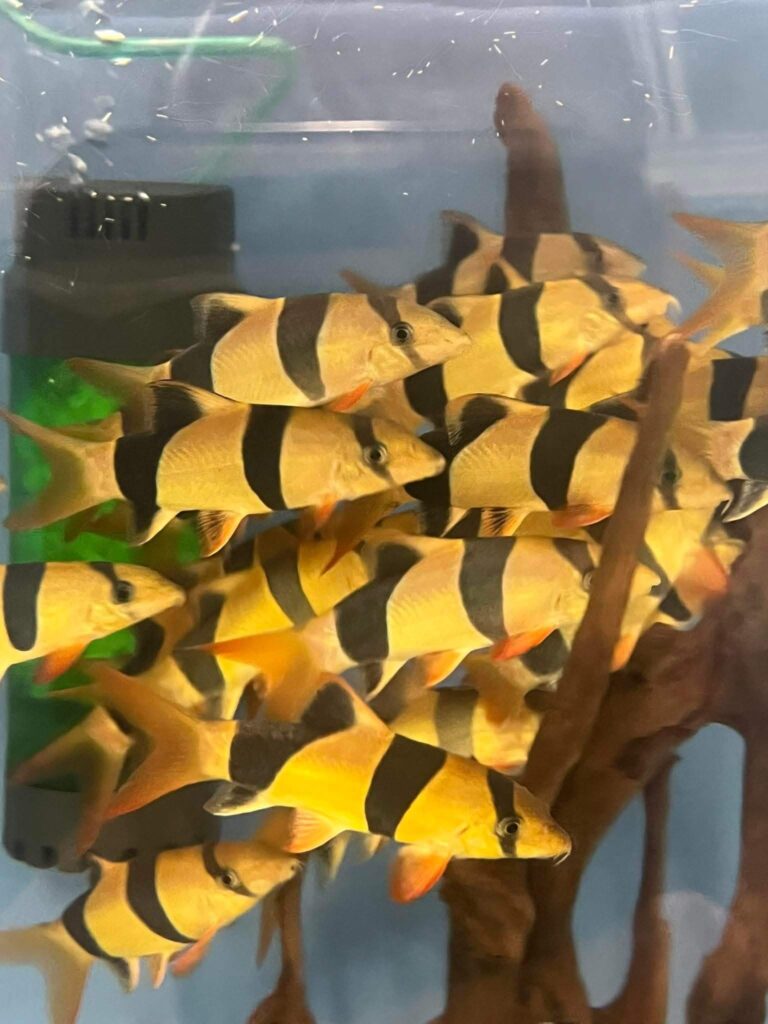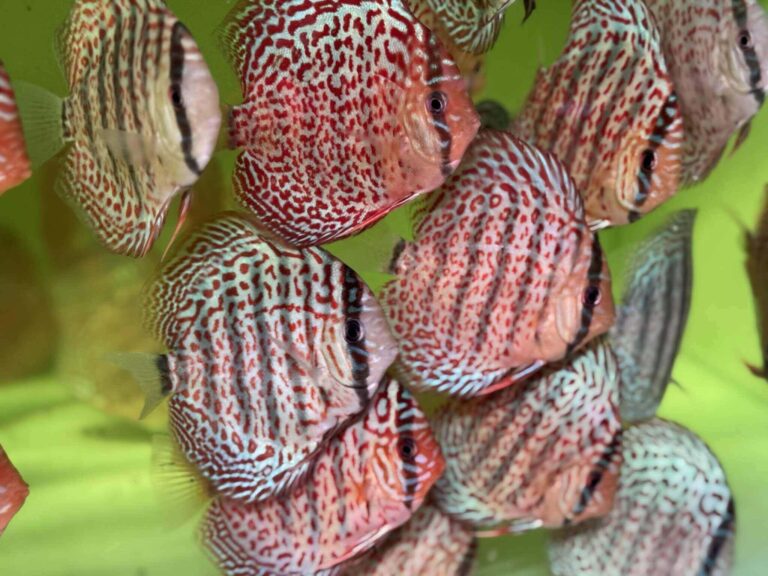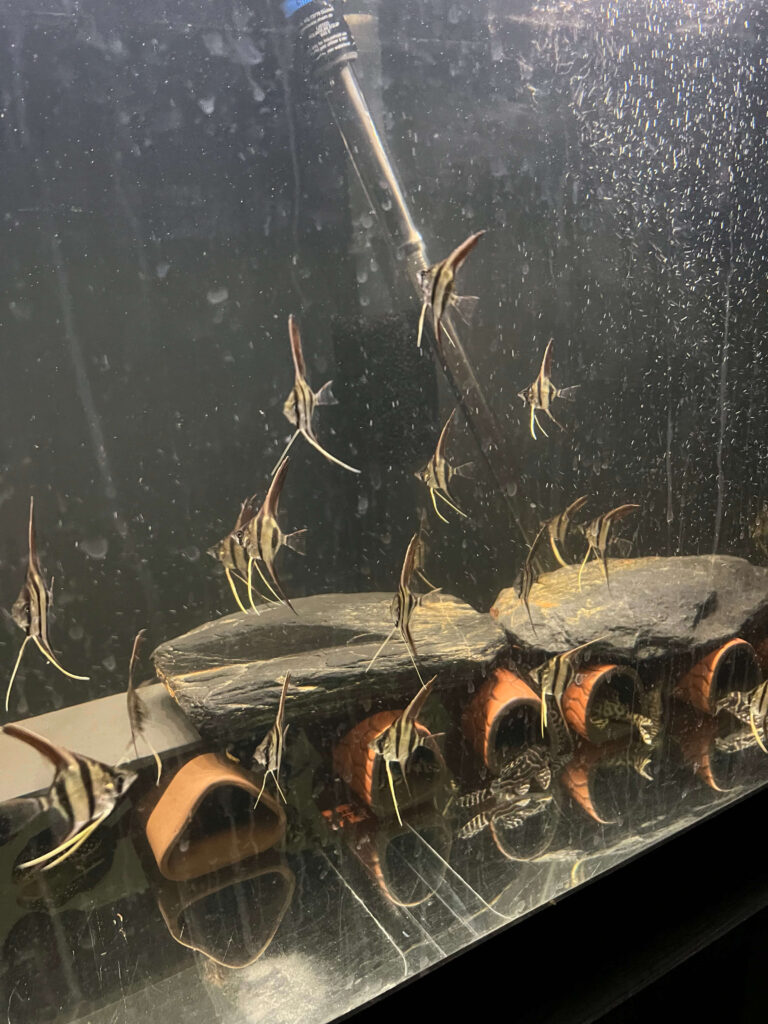Infor
Gallery
Description
Gallery

Description
The Clown Loach (Chromobotia macracanthus), also known as the Tiger Botia, is a captivating and popular freshwater fish originating from the islands of Sumatra and Borneo in Indonesia. Their striking coloration, which consists of a vibrant orange body adorned with three prominent black bands, and their playful antics make them a fascinating addition to any large community aquarium. However, their substantial adult size and social nature necessitate careful consideration of tank size and group dynamics.
Tank requirements
Size: Clown Loaches can reach a considerable size, with adults growing up to 12-13 inches (30-33 cm) long and a chunky body of 5-6 inches (13-15 cm) tall. A minimum tank size of 75 gallons is recommended for a group of adults, while a 150-gallon tank is ideal. The tank should be at least 24 inches (60 cm) tall to provide ample swimming space.
Environment: Mimic their natural habitat by providing plenty of hiding spots and visual barriers. Driftwood, caves, rocks, and sturdy plants are ideal for creating these sheltered areas. According to Aquarium Co-Op, ensure plants are robust enough to withstand digging activity, as Clown Loaches enjoy sifting through the substrate.
Substrate: A soft substrate like sand or fine gravel is best for protecting their delicate barbels, which they use to forage for food.
Filtration: Clown Loaches are active and can be messy eaters, so a robust filtration system is essential for maintaining excellent water quality. Strong canister filters or sump systems are highly recommended, especially for larger tanks.
Water Flow: Clown Loaches appreciate moderate to strong water flow, similar to their natural river environments.
Water parameters
Temperature: Clown Loaches prefer warm water, ideally between 75-86°F (24-30°C). Some sources indicate a preference for temperatures in the 80-85°F range.
pH Level: A slightly acidic to neutral pH range of 6.0-7.5 is suitable. They can tolerate a wide pH range, making them adaptable to various tank setups.
Water Hardness: Soft to moderately hard water is preferred (2-15 dGH), according to Aquarium source, with a general hardness (GH) of 8-12 dKH being ideal.
Water Quality: Maintaining pristine water quality is crucial. Regular water changes (at least 25% weekly) are essential to remove accumulated waste and maintain stable parameters. Monitor water parameters regularly using a test kit to ensure ammonia and nitrite levels remain at zero, and nitrate levels stay below 40 ppm.
Diet and feeding
Omnivorous: Clown Loaches are omnivores and will accept a wide variety of foods.
Variety is Key: Offer a diverse diet, including high-quality sinking pellets or flakes designed for omnivorous fish. Supplement their diet with live or frozen foods like bloodworms, brine shrimp, daphnia, mosquito larvae, and small crustaceans. They also enjoy blanched vegetables like zucchini, cucumber, and spinach.
Feeding Frequency: Feed them once or twice daily, providing only what they can consume within a few minutes to prevent overfeeding and maintain water quality.
Snail Control: Clown Loaches are known to eat snails, and they can be effective in controlling snail populations in the tank.
Compatibility and temperament
Social: Clown Loaches are schooling fish and should be kept in groups of at least five or more individuals to thrive and reduce stress. A group of six is recommended, but you’ll see them at their most social in a group of 30 or more, though this requires a very large tank.
Peaceful: They are generally peaceful and can be housed with a wide variety of non-aggressive, similarly sized community fish.
Suitable Tank Mates: Good companions include Tetras, Rasboras, Barbs (like Tiger Barbs), Gouramis, Discus fish (given their shared temperature preference), and some larger Cichlids. They can also be housed with certain large catfish species, clown knife fish, and other similarly sized fish.
Avoid: Do not house them with smaller fish that could be viewed as prey, nor with aggressive or fin-nipping species.
Lifespan
10-15+ Years: With proper care, Clown Loaches can live for 10-15 years, and potentially longer, reaching up to 20 or even 25 years in ideal conditions.
Breeding
Difficult in Captivity: Breeding Clown Loaches in a home aquarium is very challenging due to their specific environmental and behavioral requirements, and it’s rarely achieved in home aquariums. Successful breeding is typically achieved in specialized fish farms using hormone injection methods.
Note: Clown Loaches are considered an intermediate-level species due to their large adult size and social requirements. It’s crucial to understand their needs and plan accordingly to ensure they have the space and company they require for a healthy and happy life.
New Product
- 40$
- 15$
- 40$







